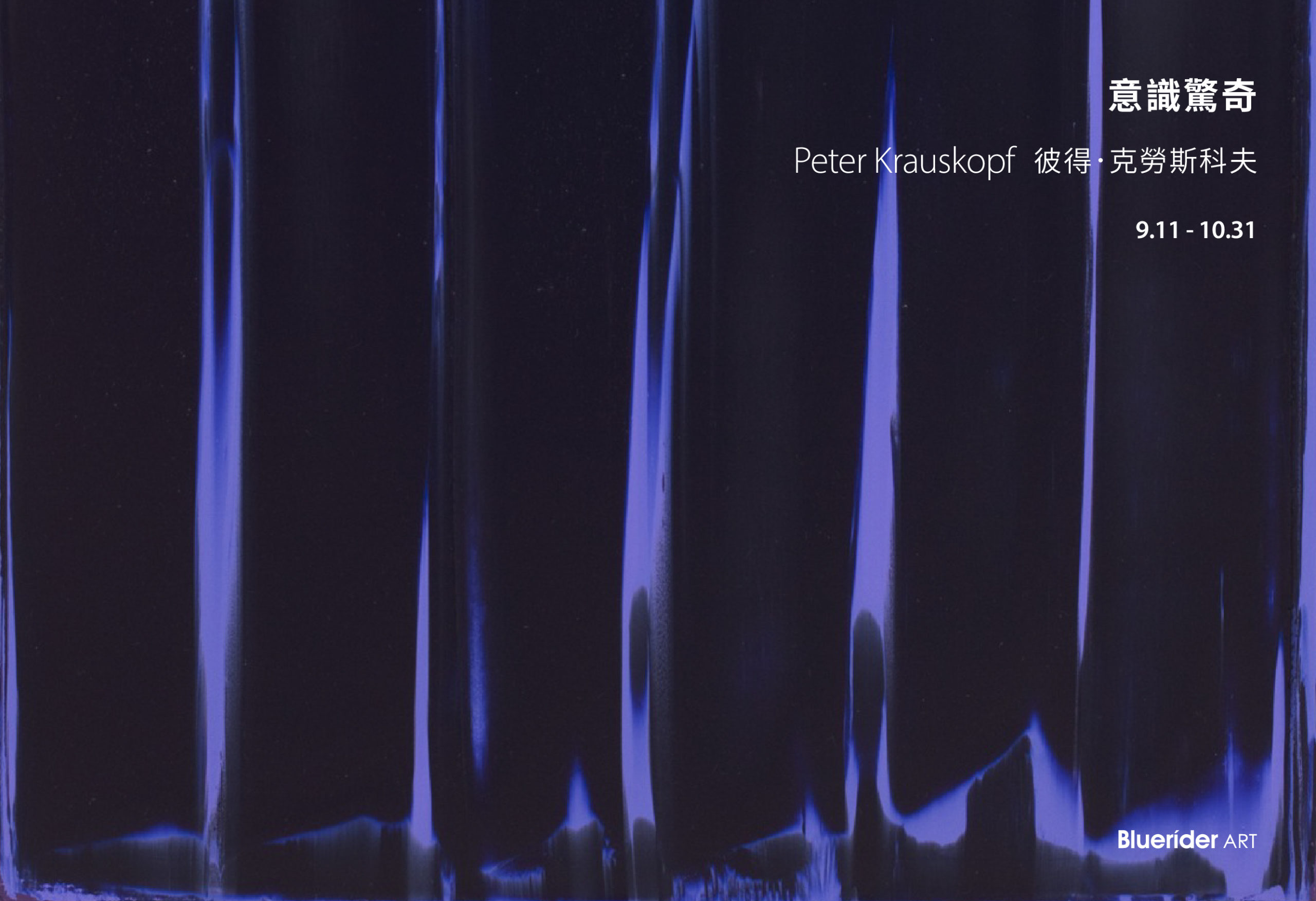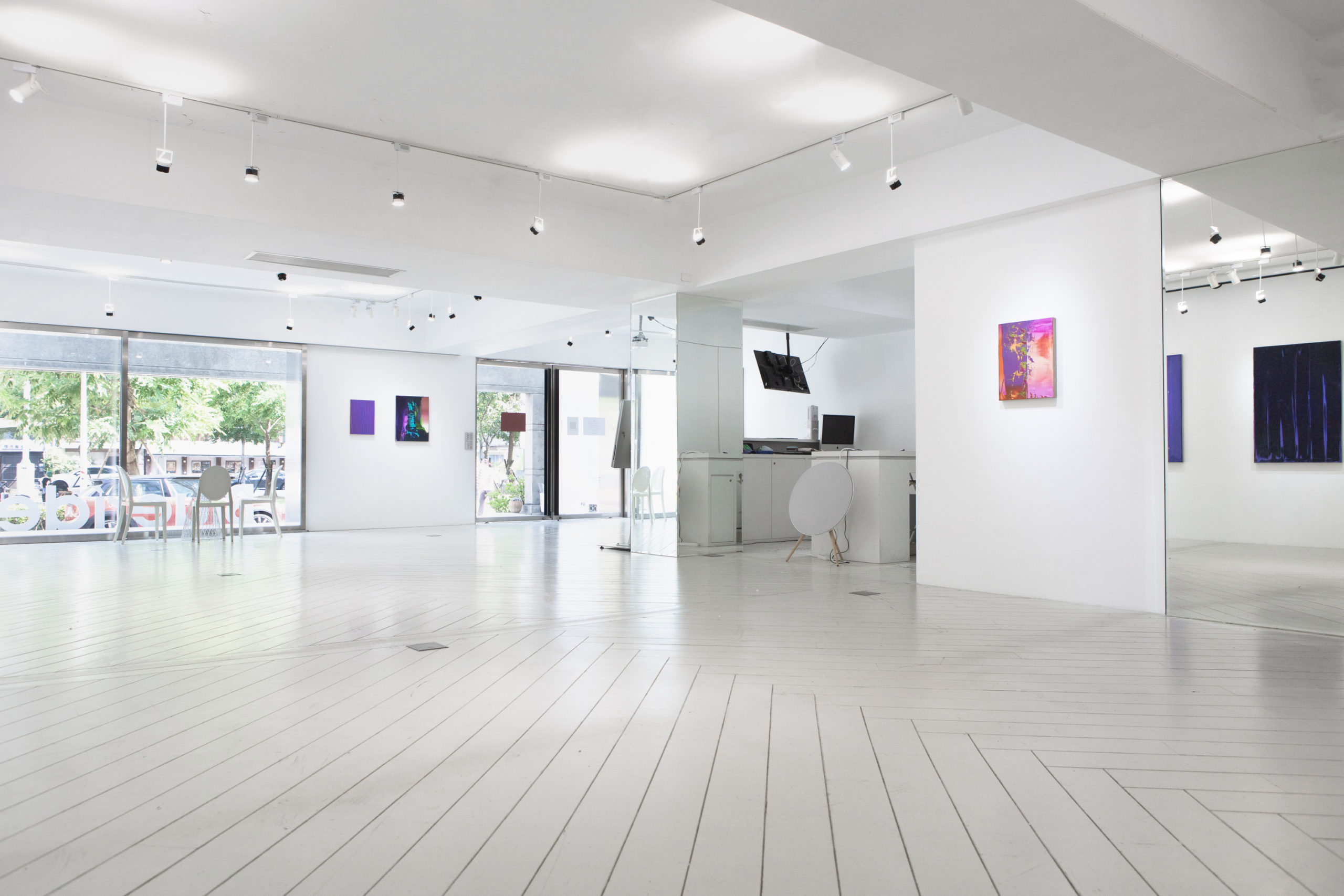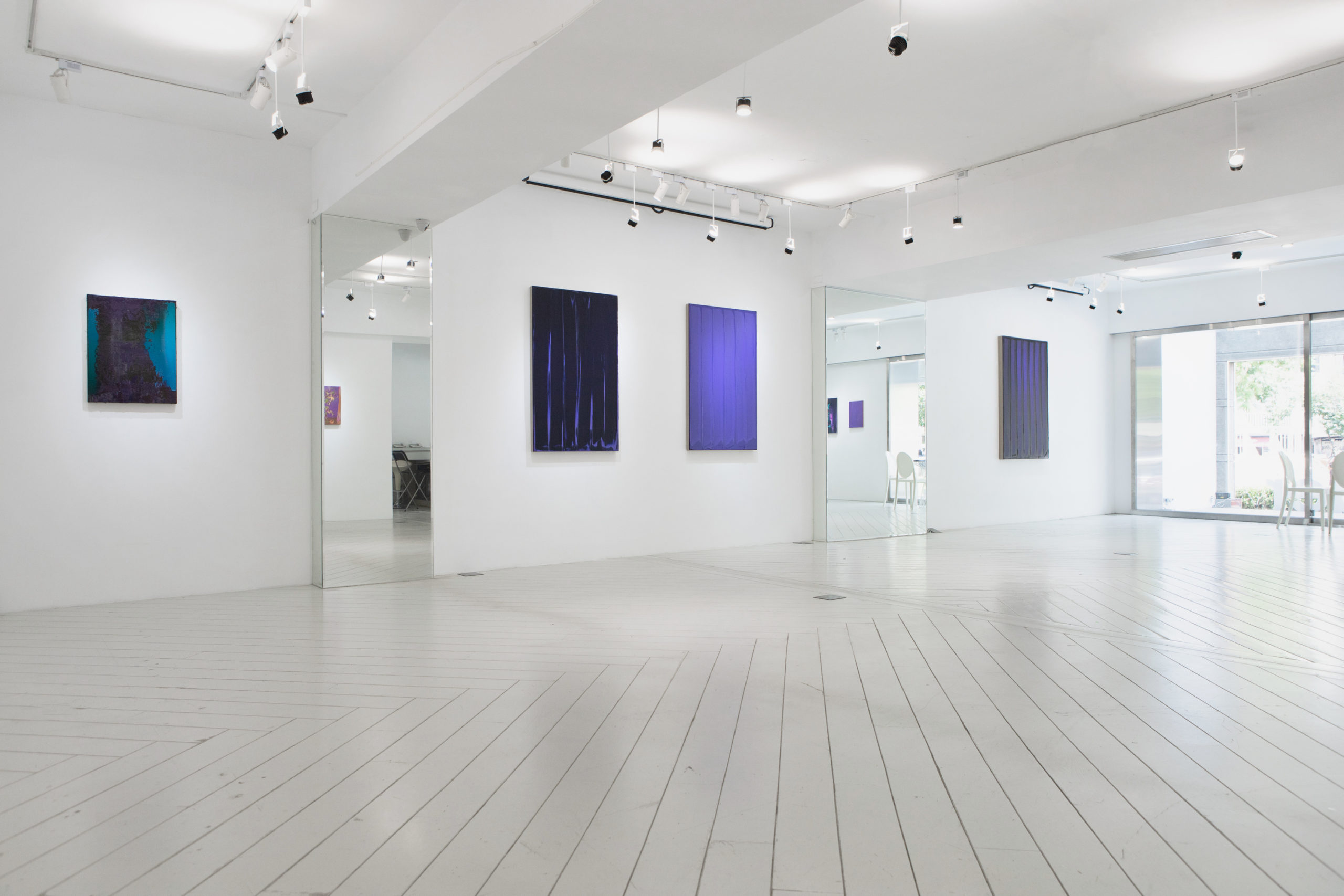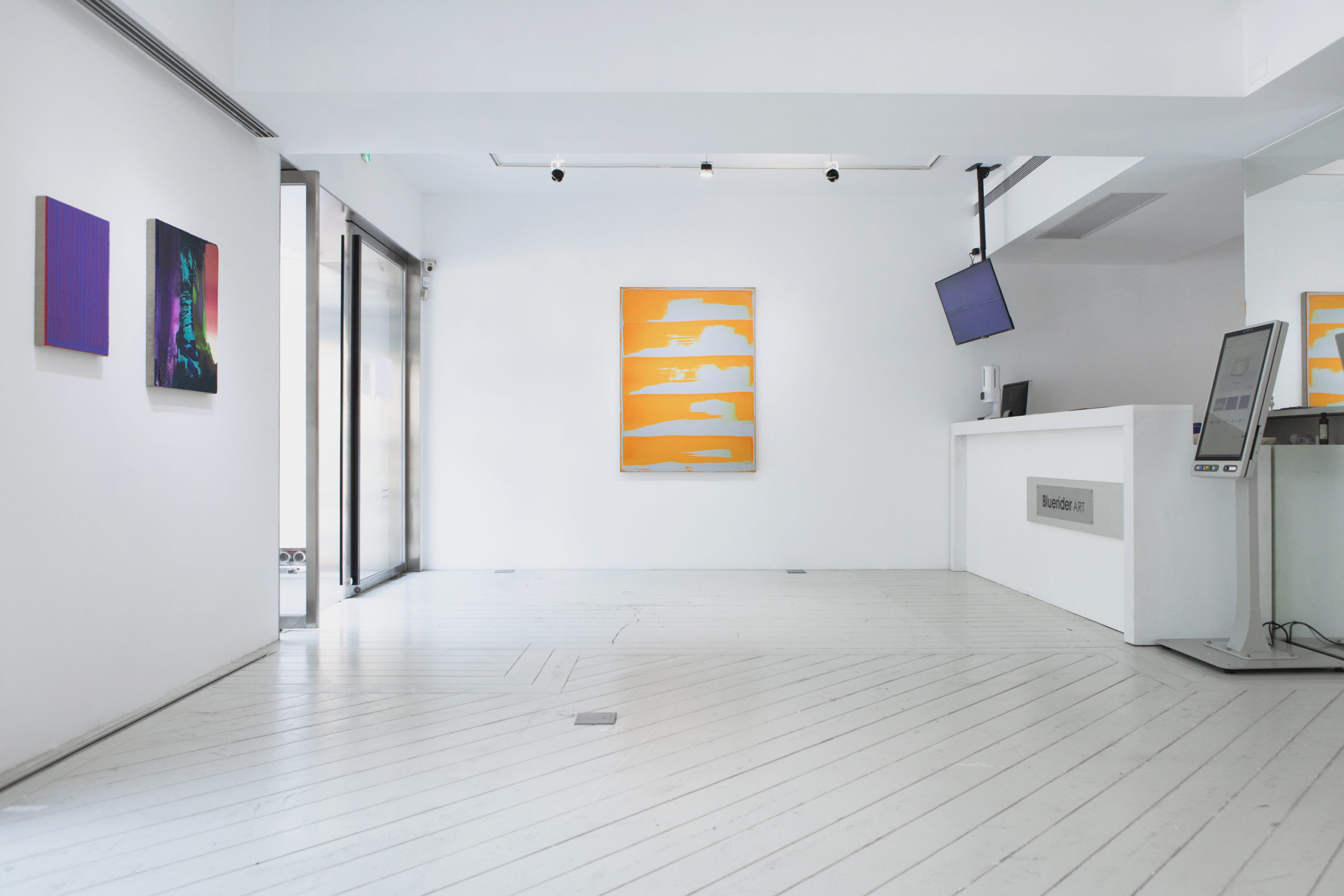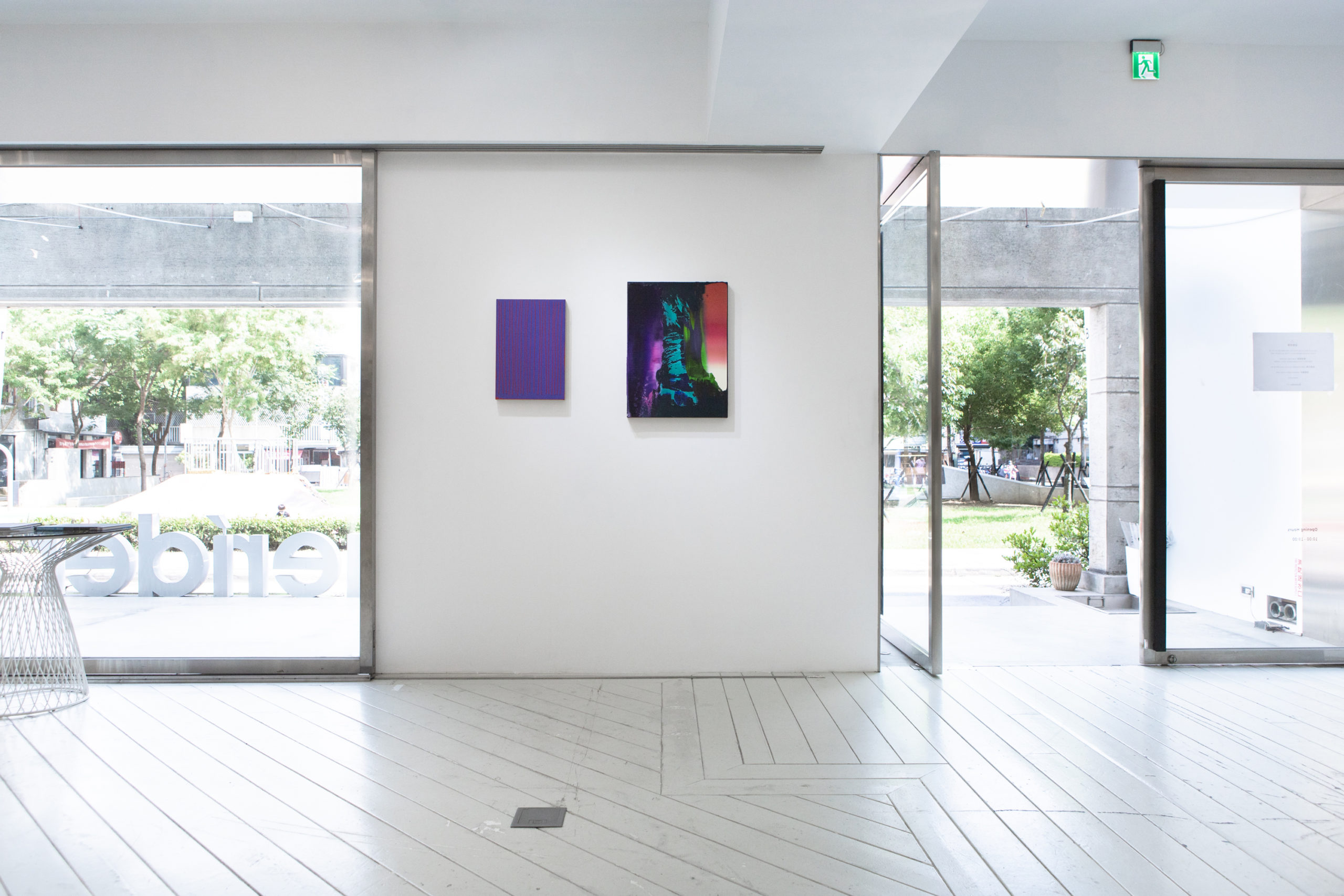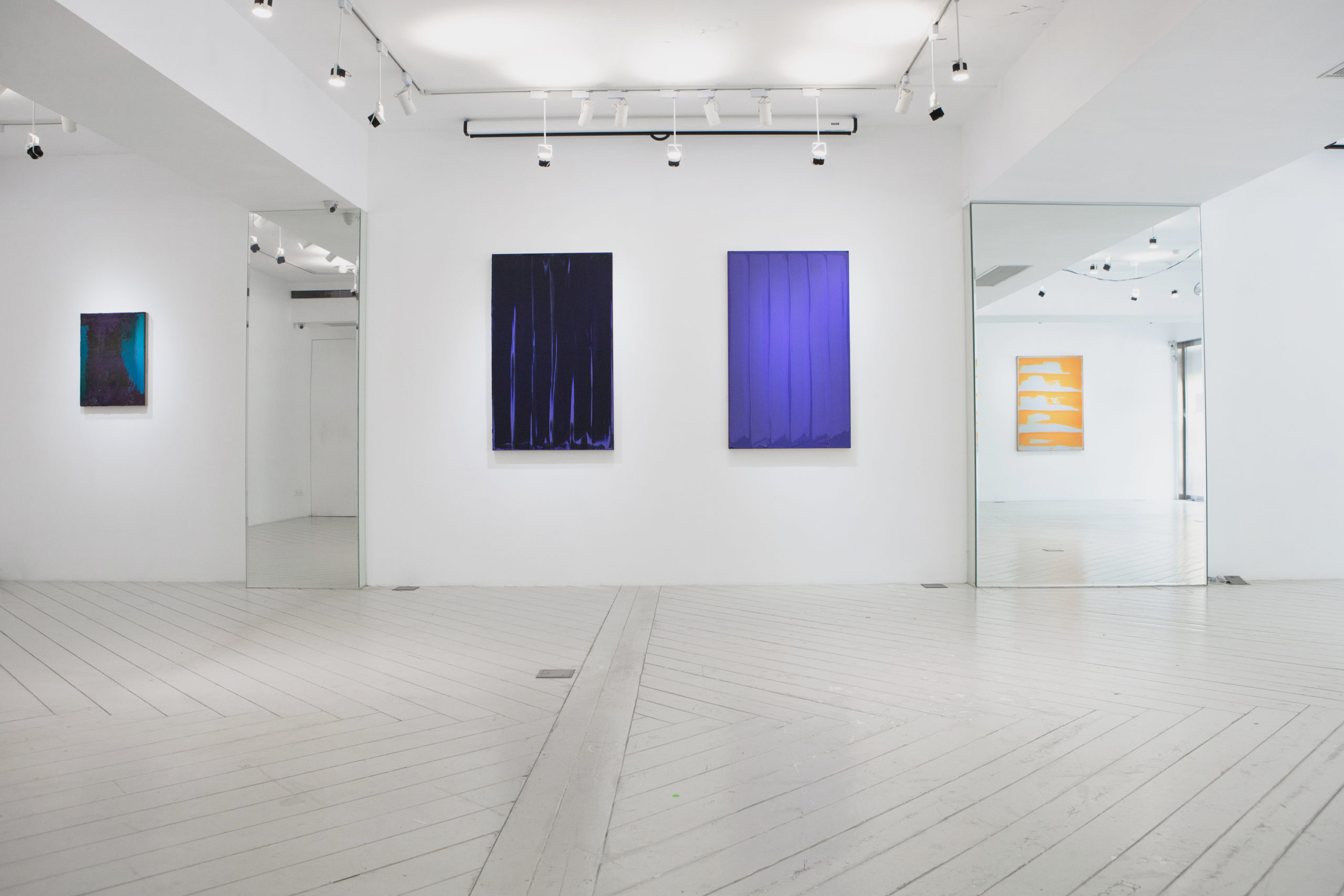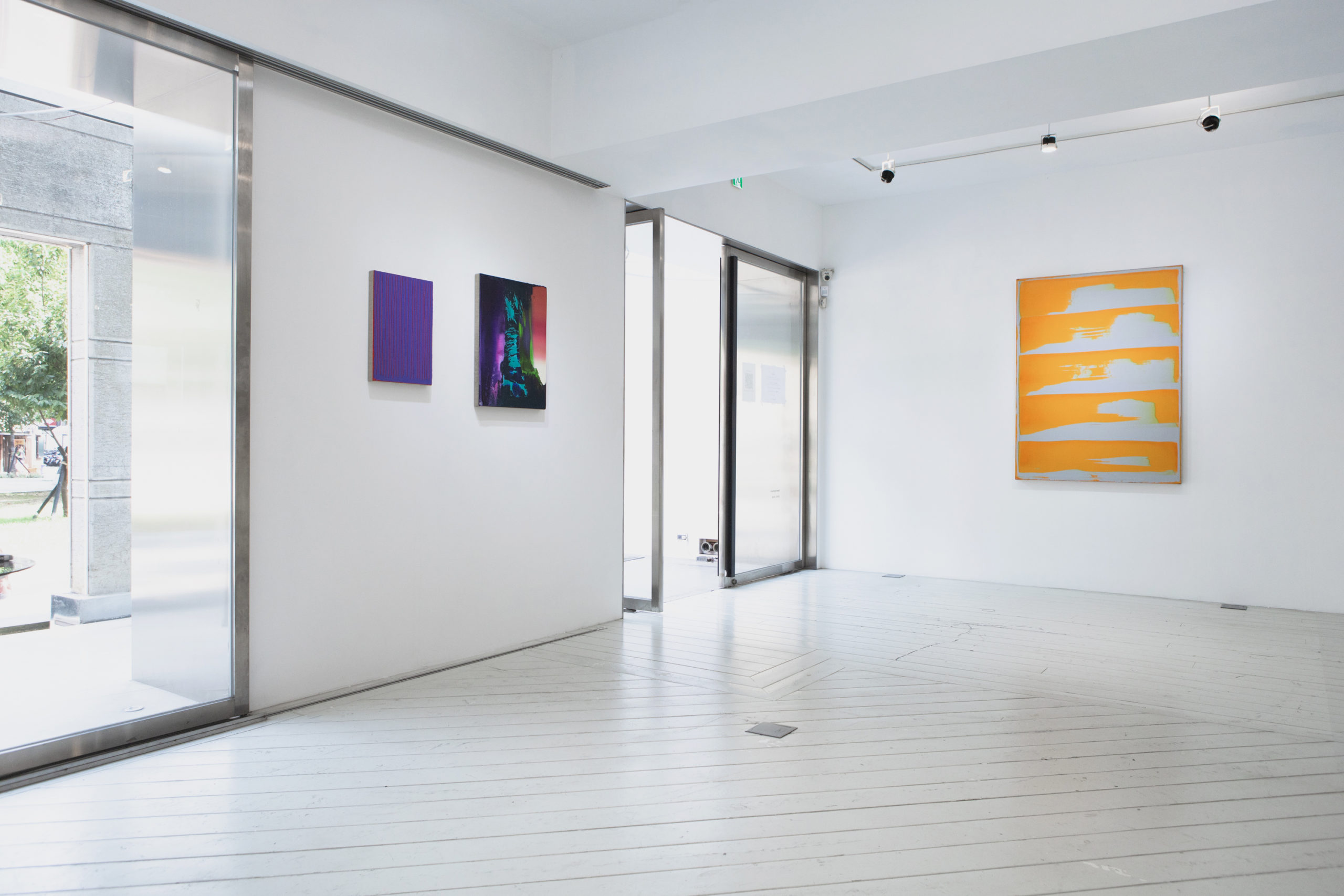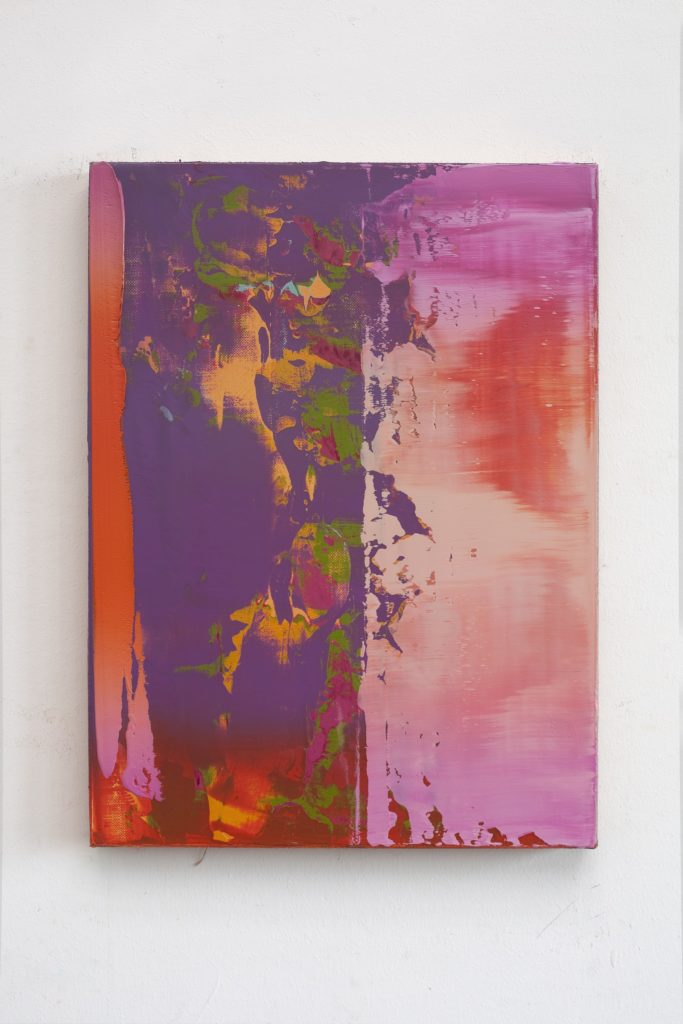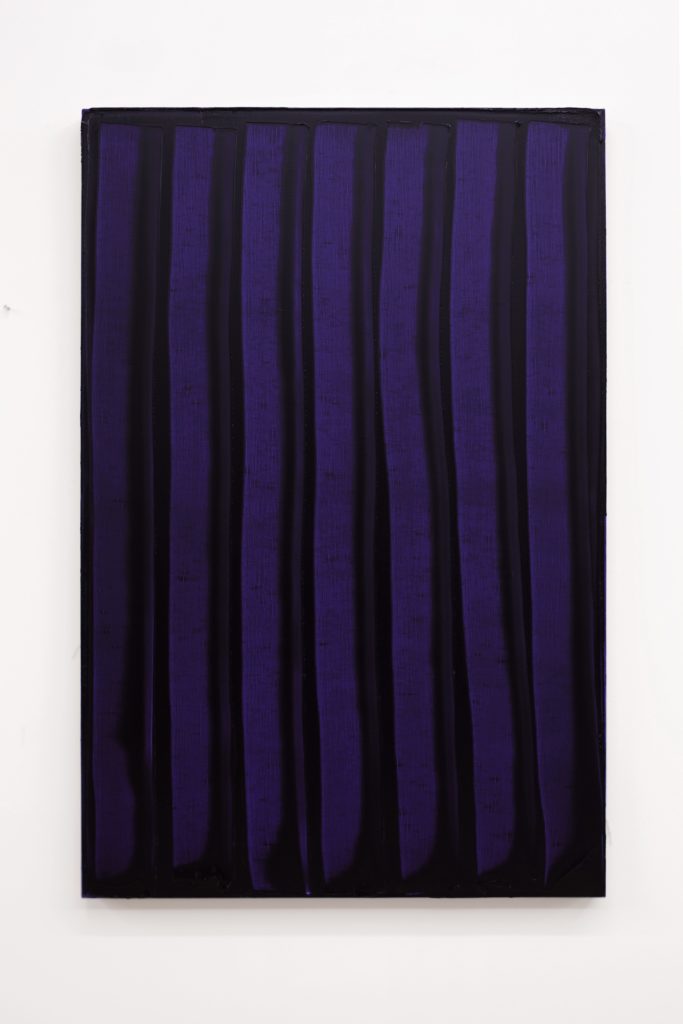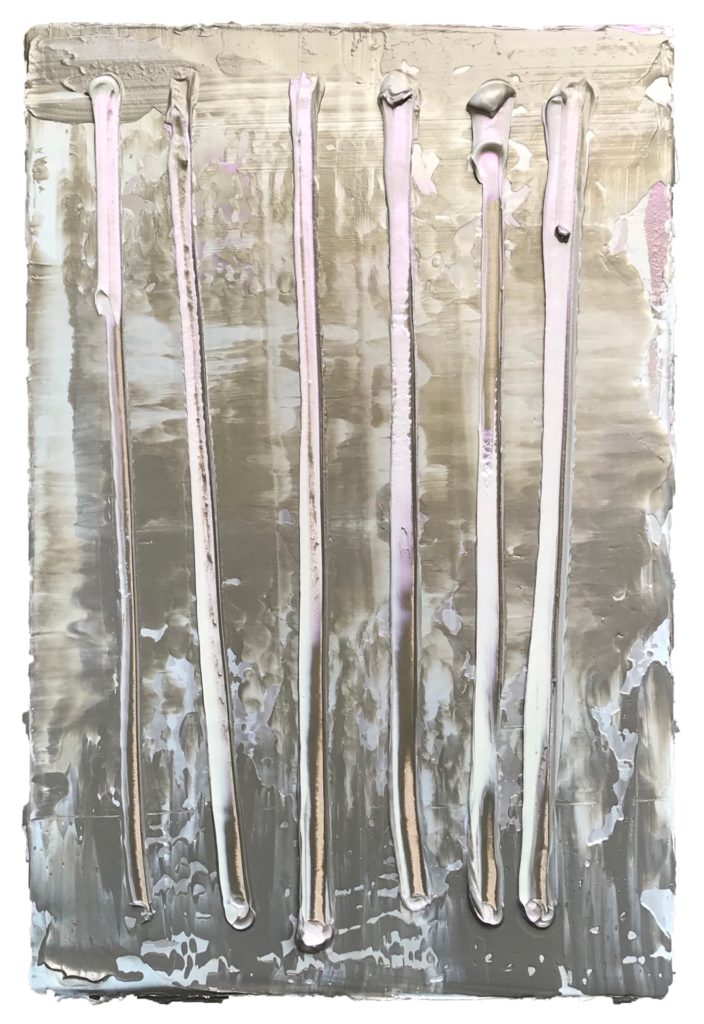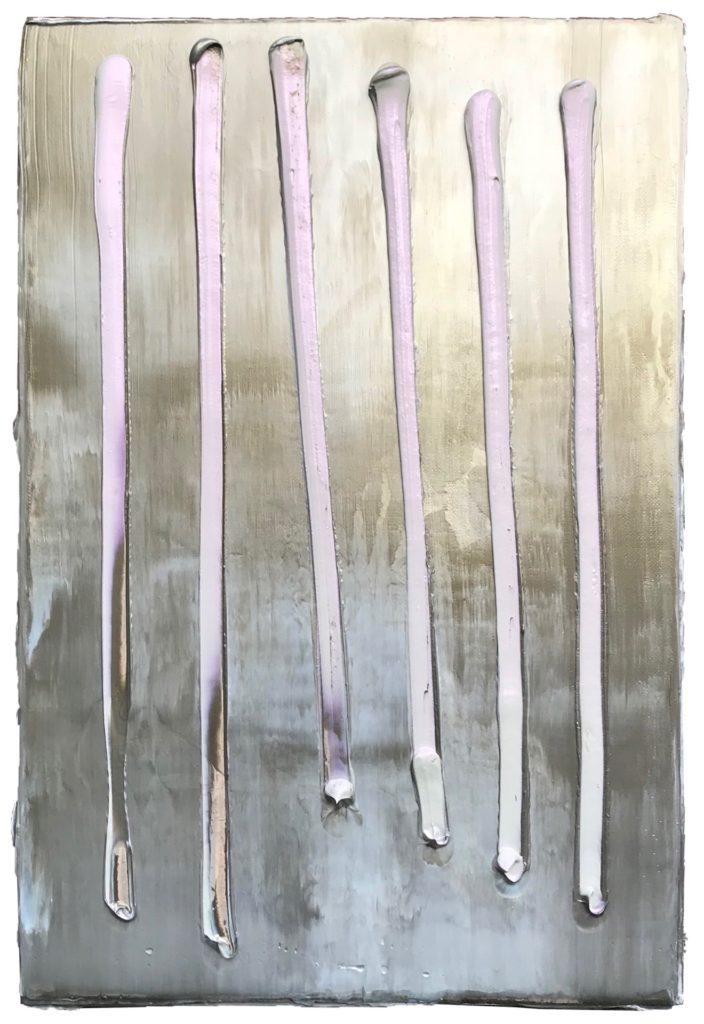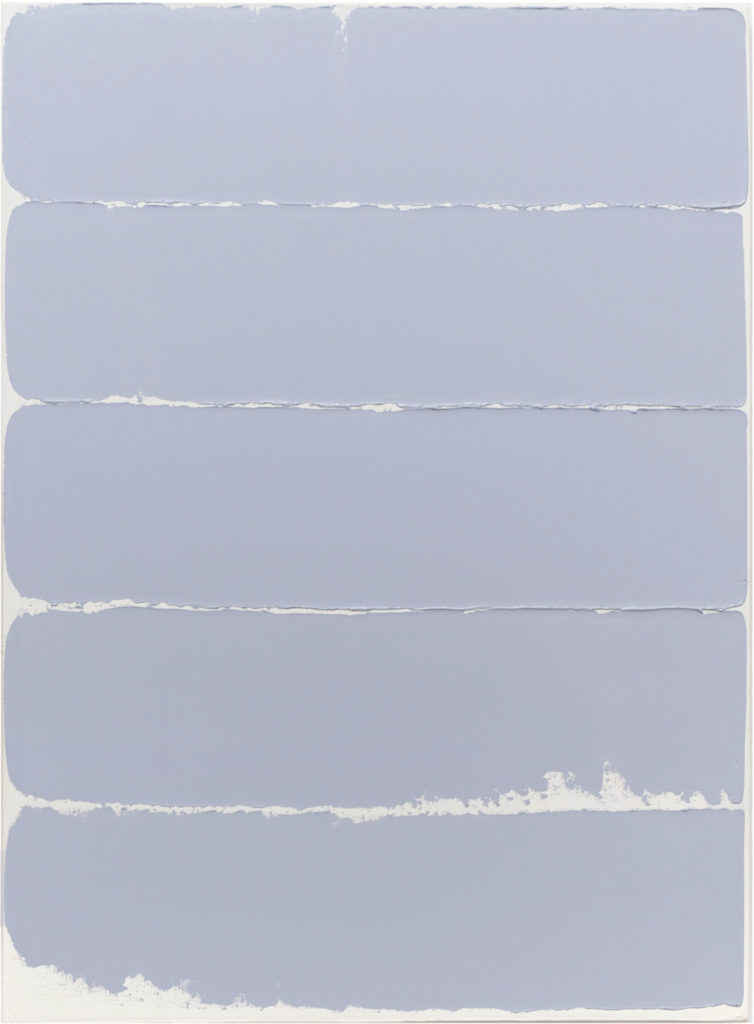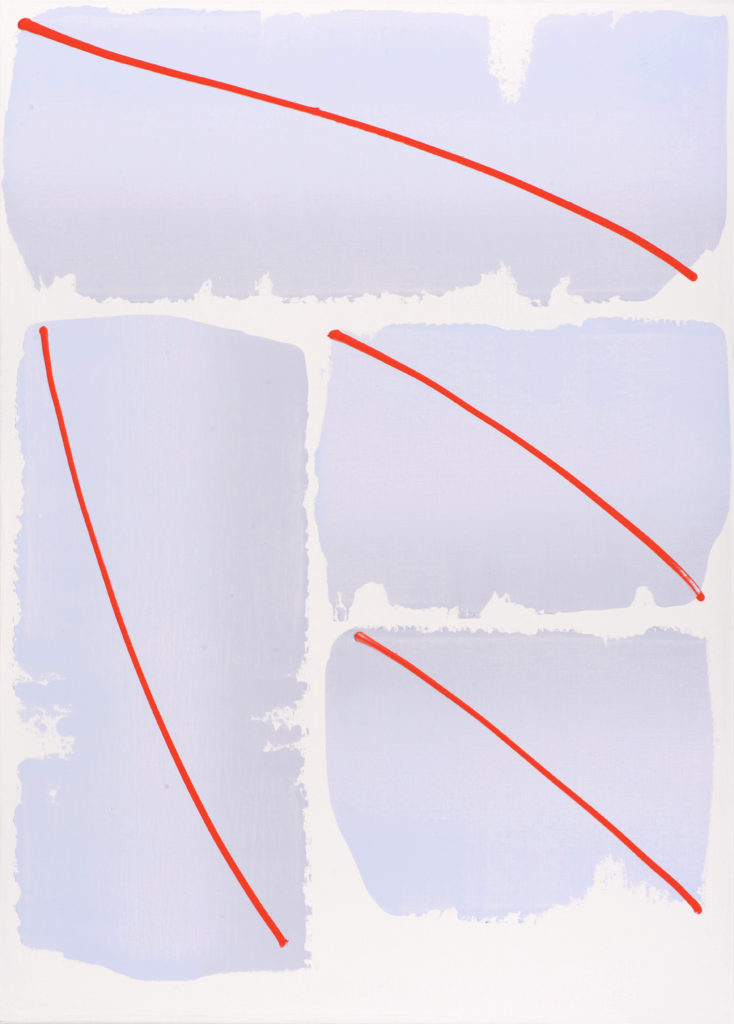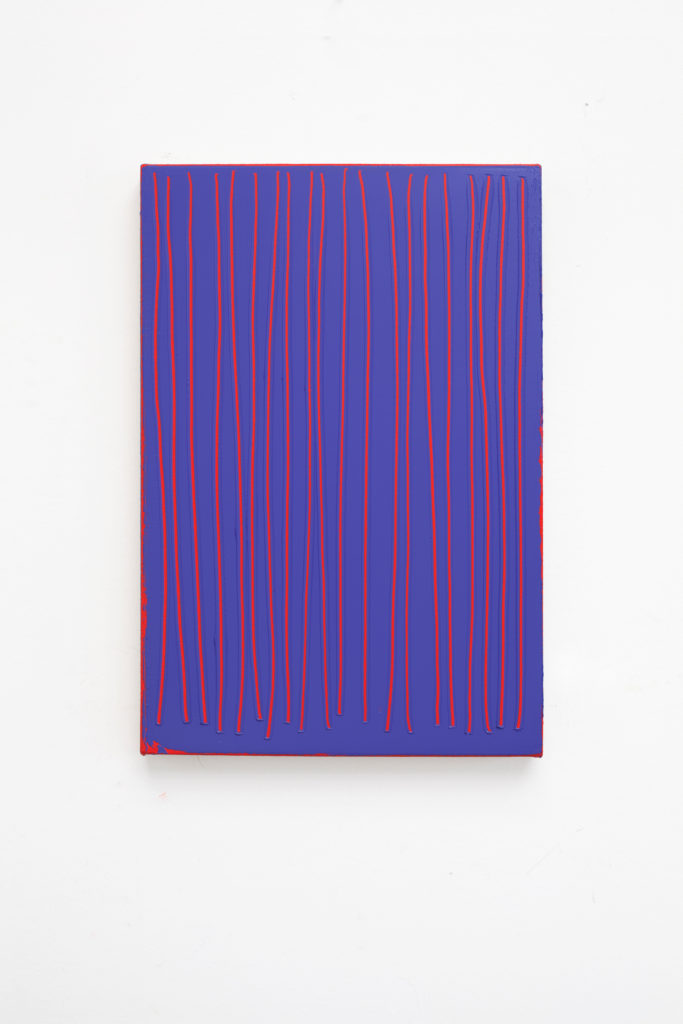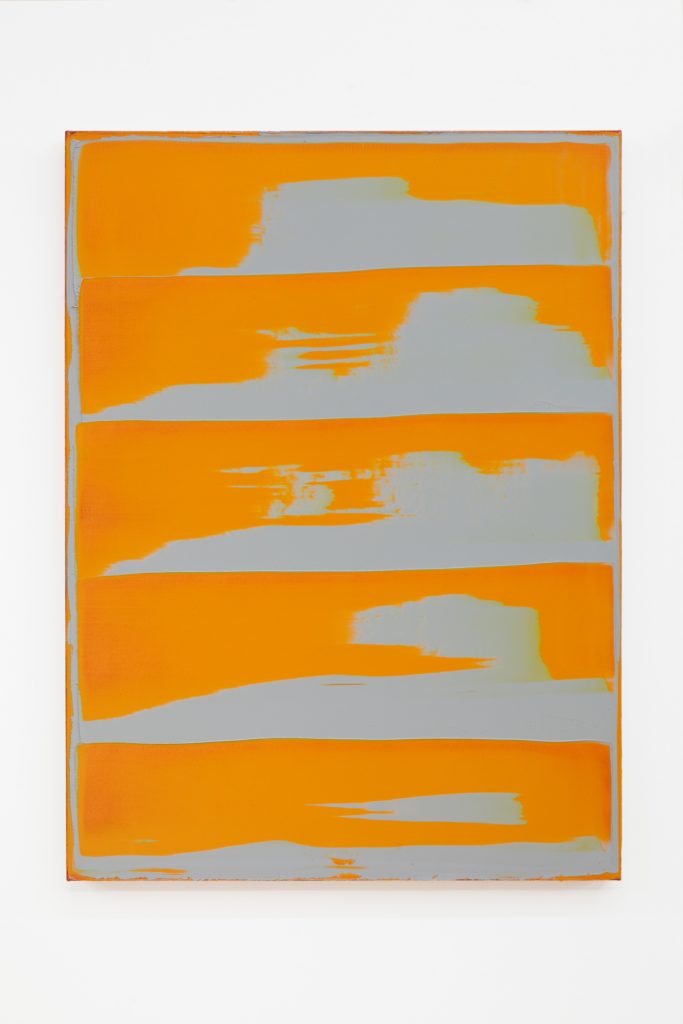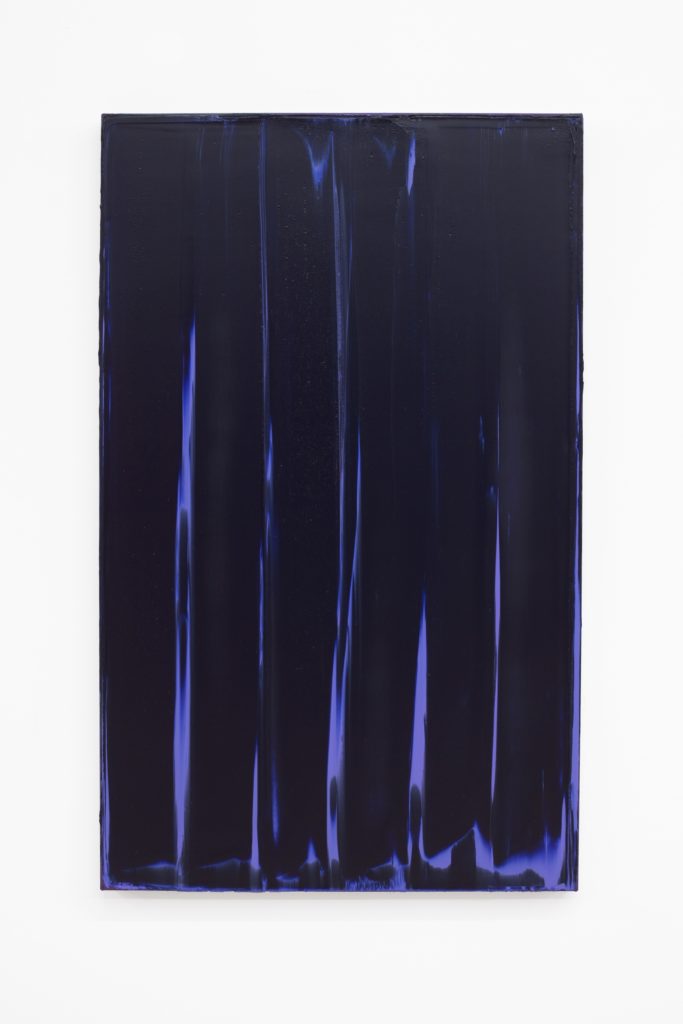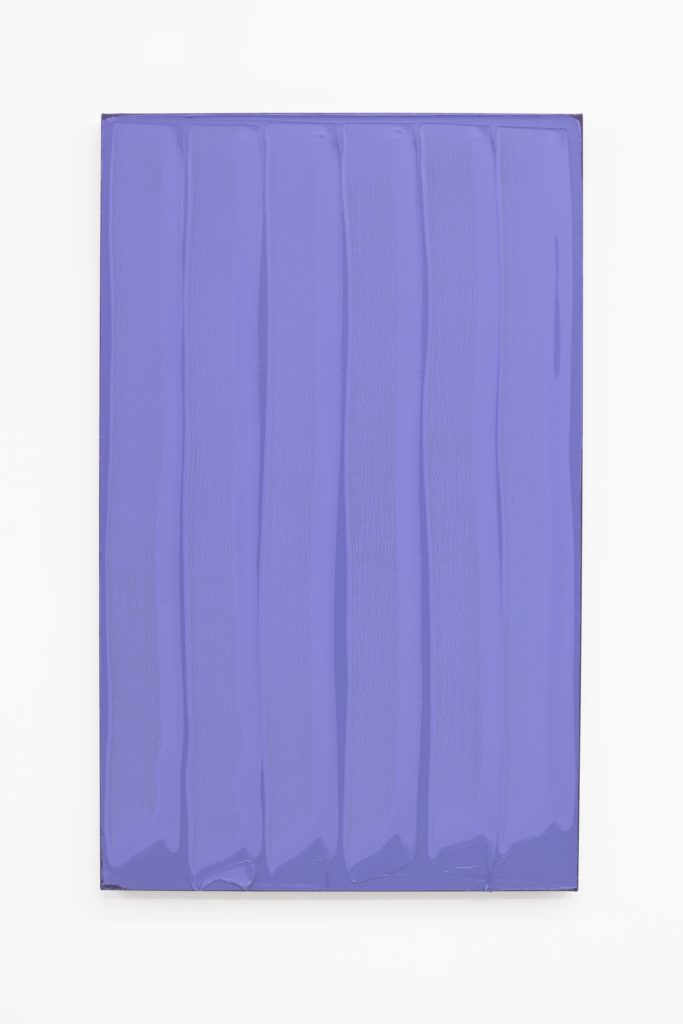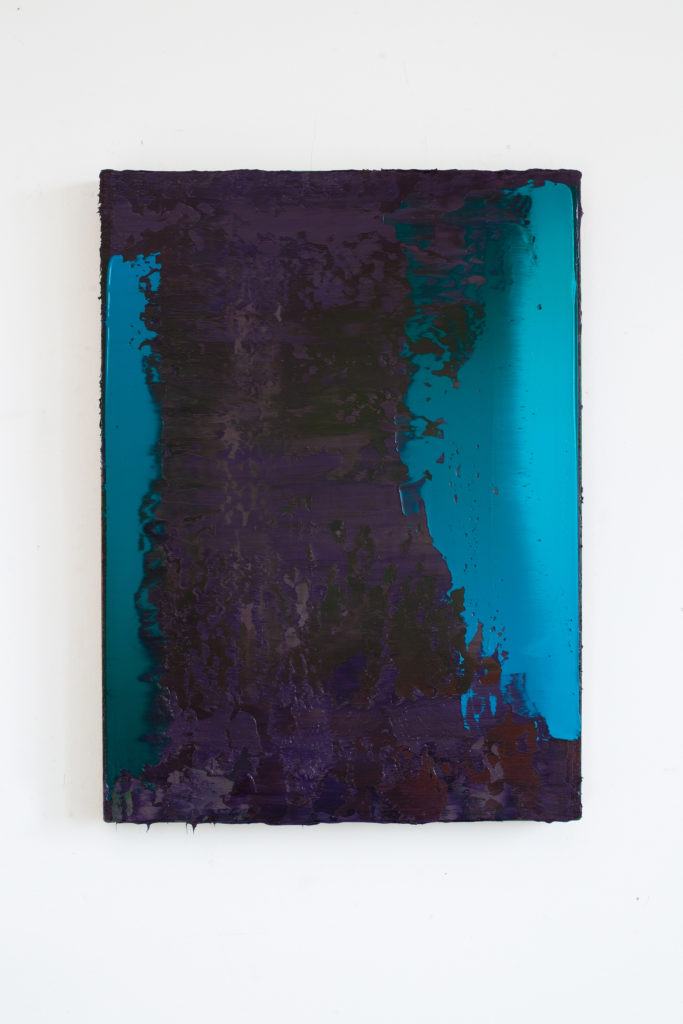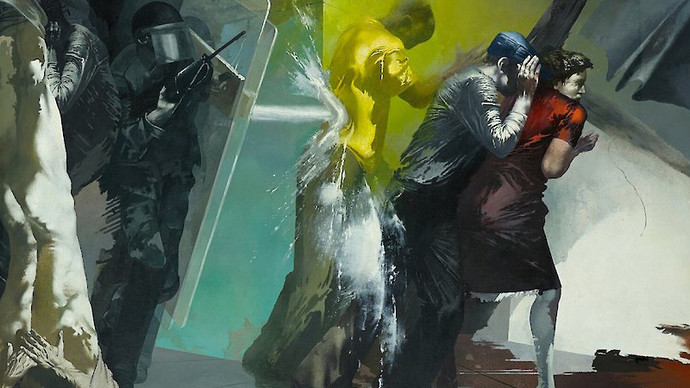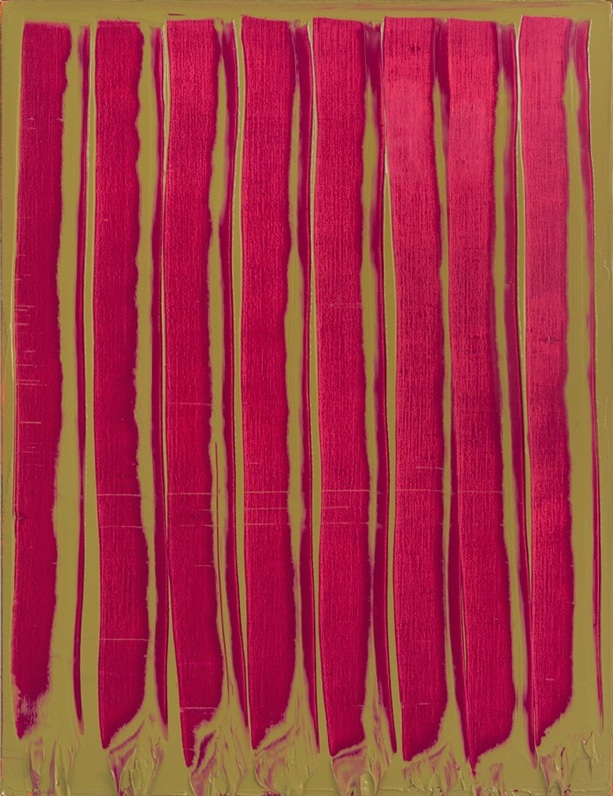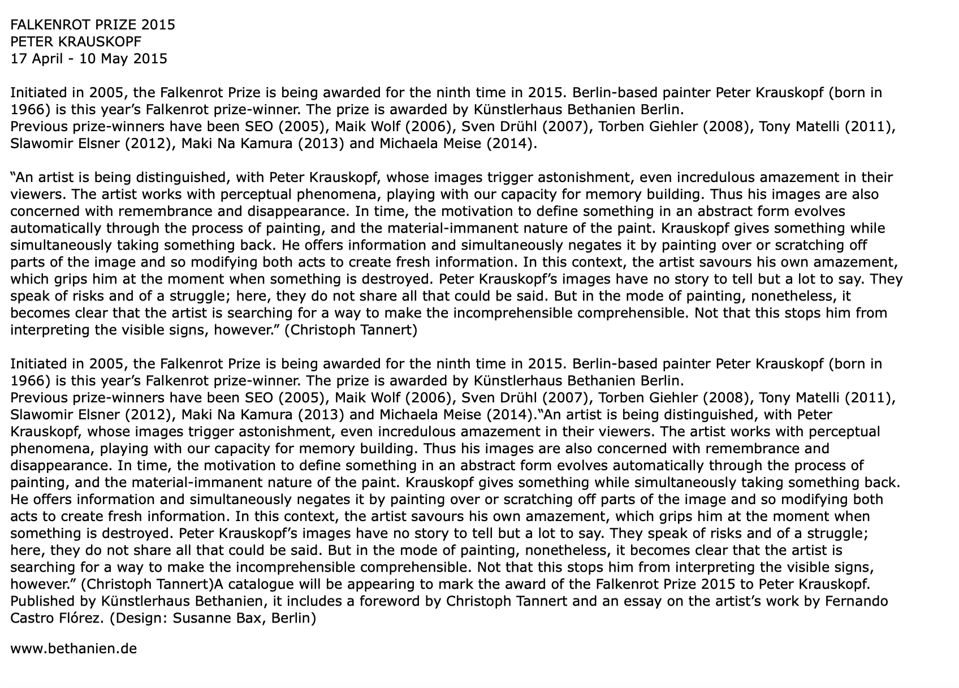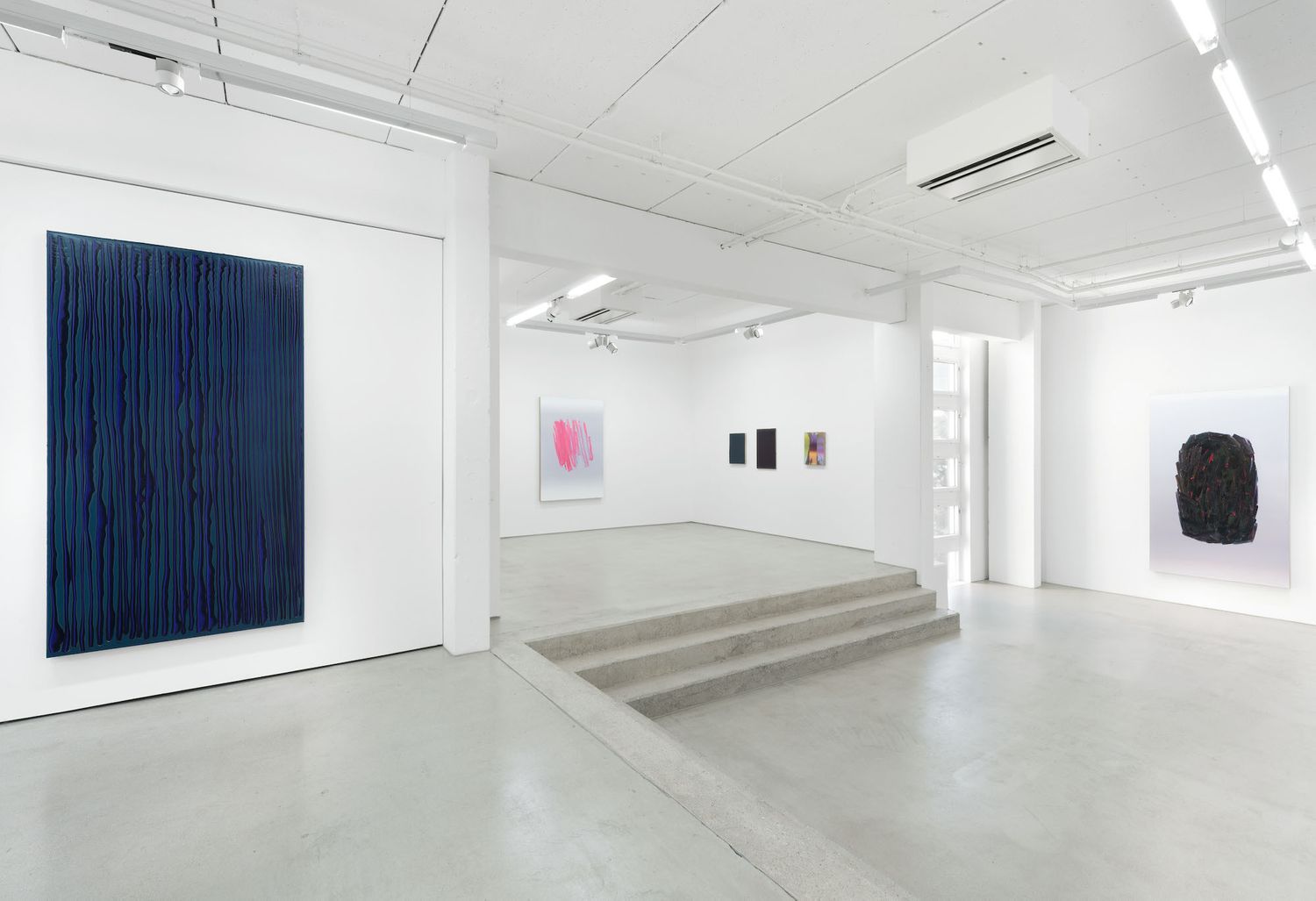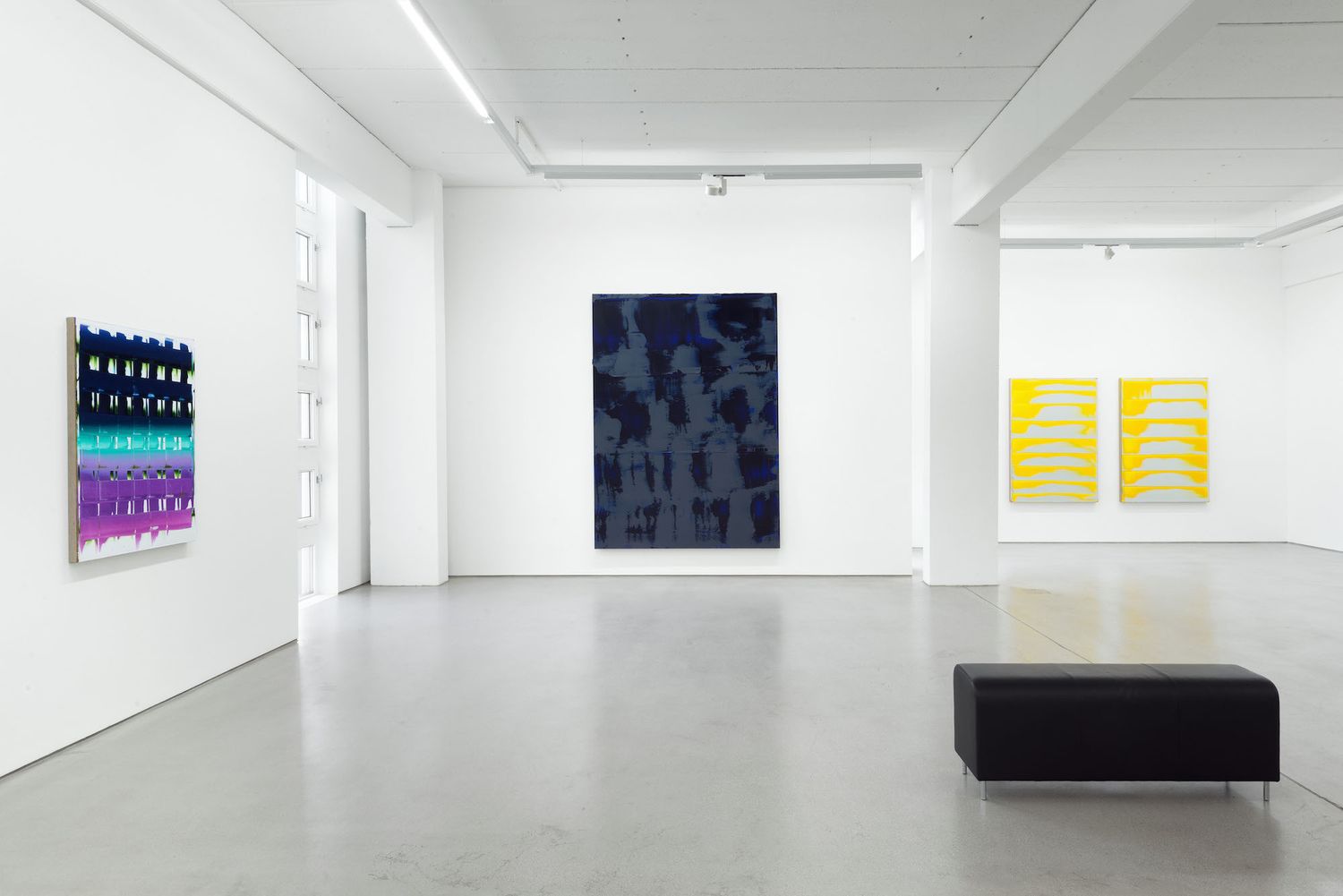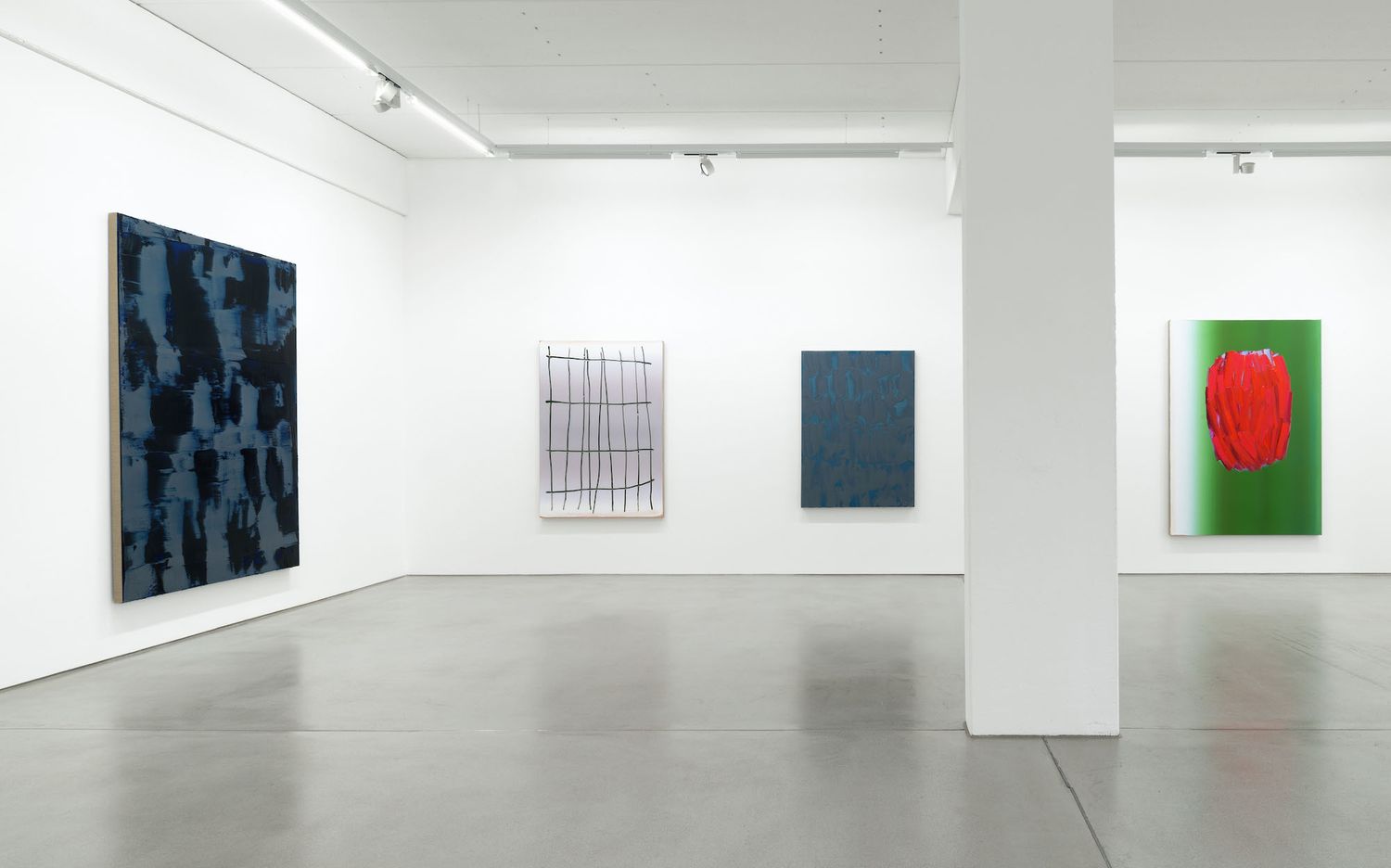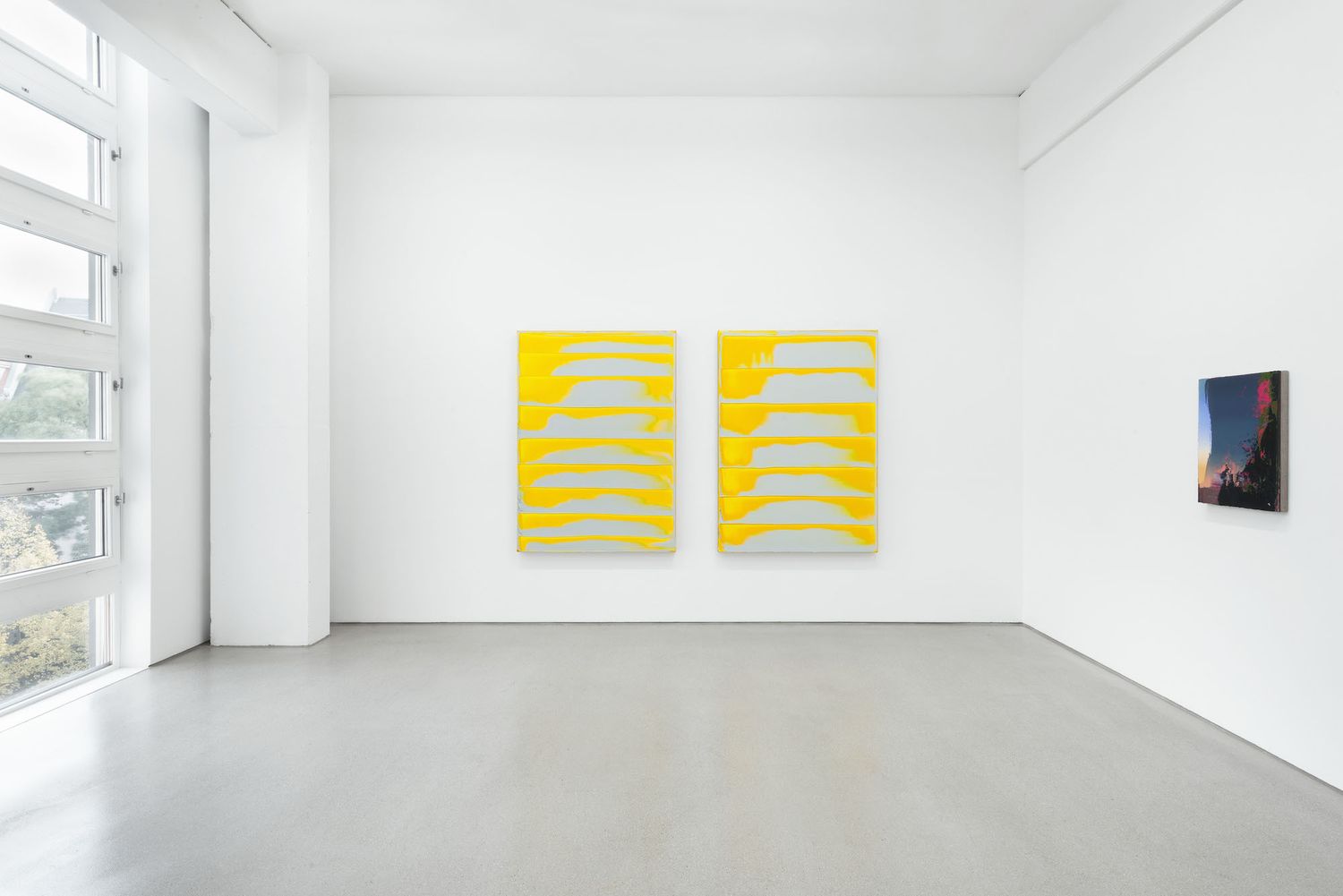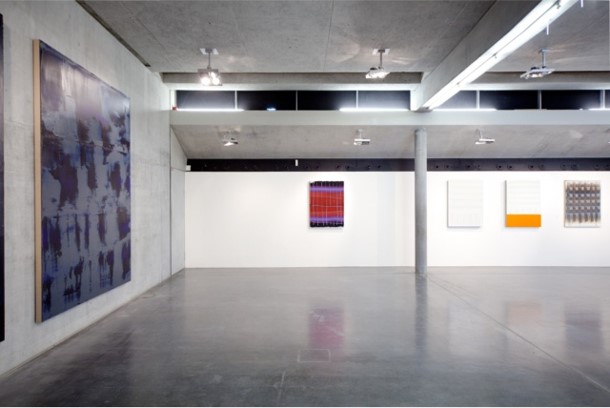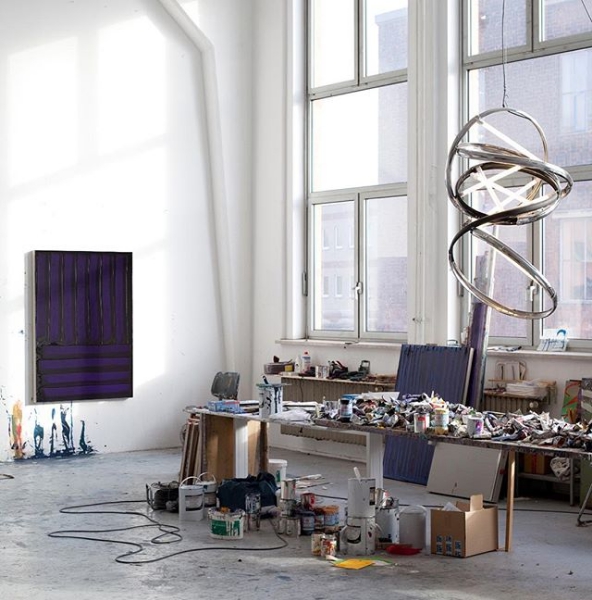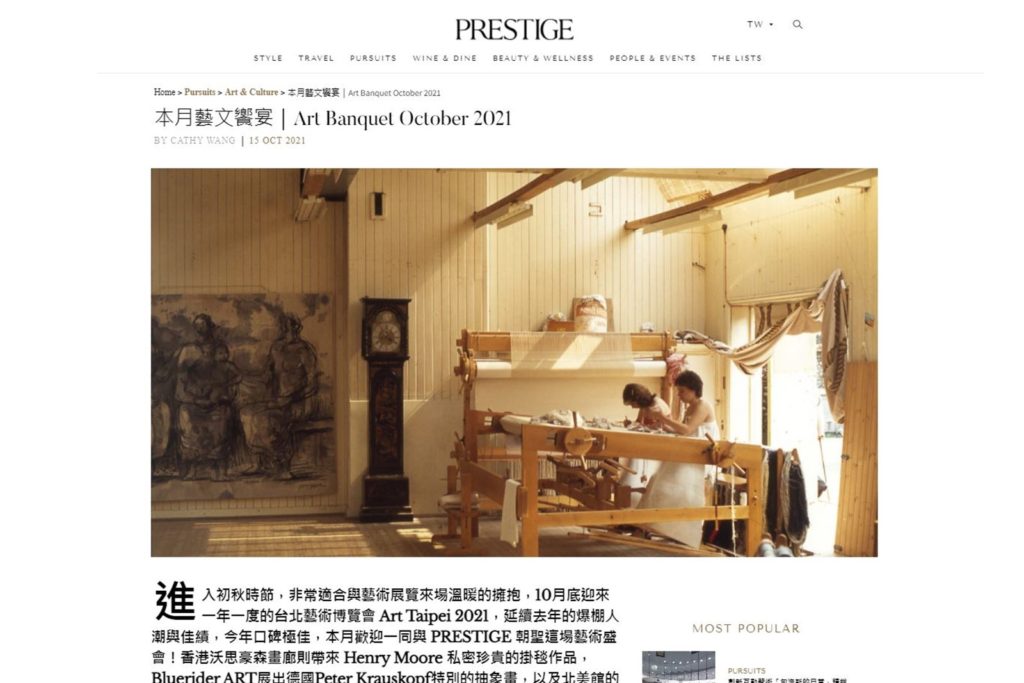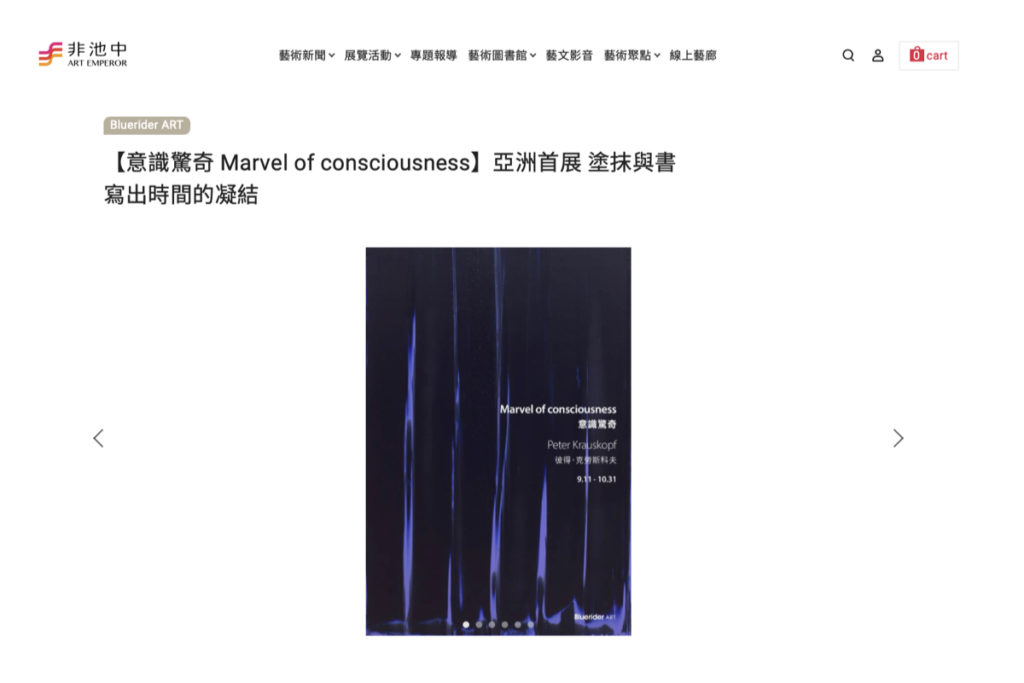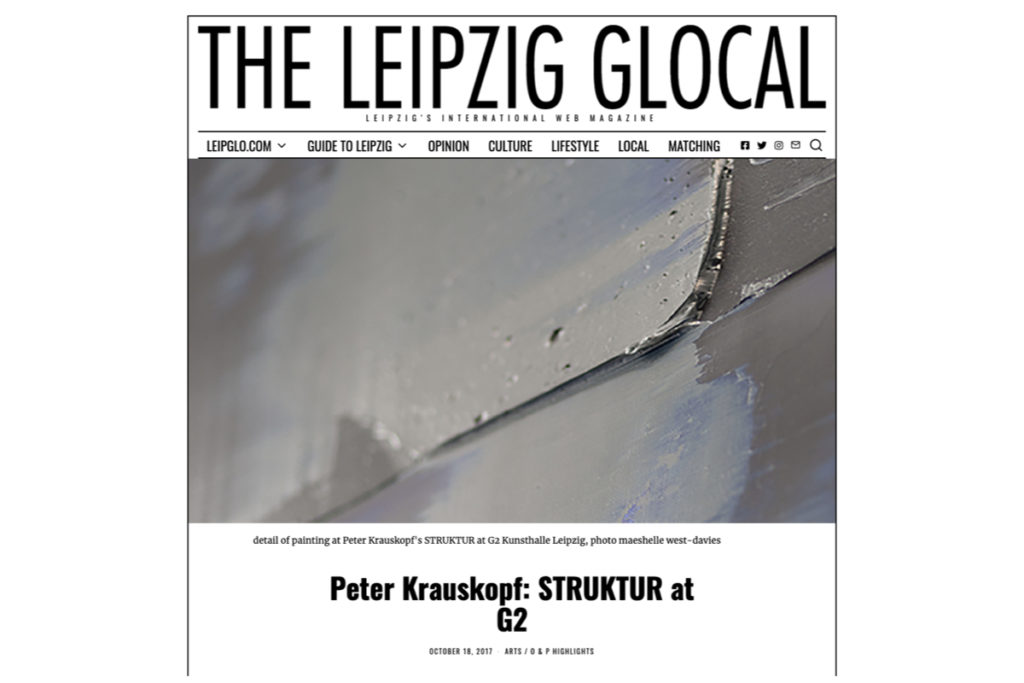看展览Exhibition
预告片 Trailer
艺术家影片 Artist Video
台北·敦仁 展馆 DunRen Gallery
“ 意识惊奇”
— Peter Krauskopf 彼得.克劳斯科夫 亚洲首个展
Bluerider ART 很荣幸宣布即将於9.11(六)推出「 意识惊奇」 Peter Krauskopf 彼得.克劳斯科夫亚洲首个展。Peter Krauskopf 彼得.克劳斯科夫(德,b. 1966) 生於德国莱比锡,就读莱比锡视觉艺术学院,并受莱比锡画派先驱 Arno Rink阿诺.林克指导完成学业。目前居住及创作於柏林。Krauskopf克劳斯科夫是莱比锡画派中第一位由写实走向抽象的艺术家。早期作品在观念艺术上探讨,也尝试过「条幅画」 (strip painting),而后不断尝试抽象艺术的可能性。西班牙哲学家暨艺术评论者Fernando Castro Flórez费尔南多.卡斯特罗.弗洛雷斯曾形容:「透过他神秘而寧静的画作,Peter Krauskopf彼得.克劳斯科夫打开了那扇惊奇之窗。面对弃绝光明的虚无喜悦,他绘製了一个让我们可以找回最强烈美感的空间。」2015年他获得国际当代艺术知名项目 Falkenrot Prize,曾受邀於欧洲重要城市柏林、慕尼黑、莱比锡、里斯本等城市举办个展,作品被纽伦堡日耳曼国家博物馆(Germanisches Nationalmuseum Nuremberg)、G2莱比锡艺术馆(G2 Kunsthalle Leipzig)、慕尼黑Munich Re风险管理艺术收藏(Munich Re Art Collection Munich)等机构典藏。
Peter Krauskopf 早期作品


NR 24/04, Alkydharz/Leinen, 80cm x 270cm, 2004 

NR 18/03, Alkydharz/leinen, 80cm x 260cm, 2003
Peter Krauskopf彼得.克劳斯科夫的创作以抽象绘画为主,利用流体顏料反覆涂装,再使用刮刀把顏料抹除下来,在整体画面形成层层叠叠的表面状态,而在深层处则有顏色的渐变,亦用反覆刮除,形成丰富复杂的纹理。更特别的是,他鲜少使用画笔作画,而是利用涂料本身去形塑层次,如同雕塑般在平面展开水平或垂直的转折与生长。流体顏料的动向通常是不可预期的,艺术家必须运用全身力量、灵活地反应随时產生变化的涂层,并将所有片段之处融合为一。顏料的扩张或是因刮除动作而產生的锯齿边缘,以及不同顏色交织的破碎层次都是极迷人的表现,Krauskopf克劳斯科夫对这种「反覆绘画的过程」 (process of overpainting)相当感兴趣,他认为这是对时间的「反覆书写」(overwriting of time),抹去了过去的时间与回忆,再涂上新的一层歷史与记忆。他的作品乍看之下是抽象的,但其实都是一段时间的凝结物,表面均质化、平滑性,在已存在旧的表面上刷上新的顏料,再成为新的图像。他让过去与现在的画面之间產生共存共生的关係,被认为是「时间的拼贴画」。

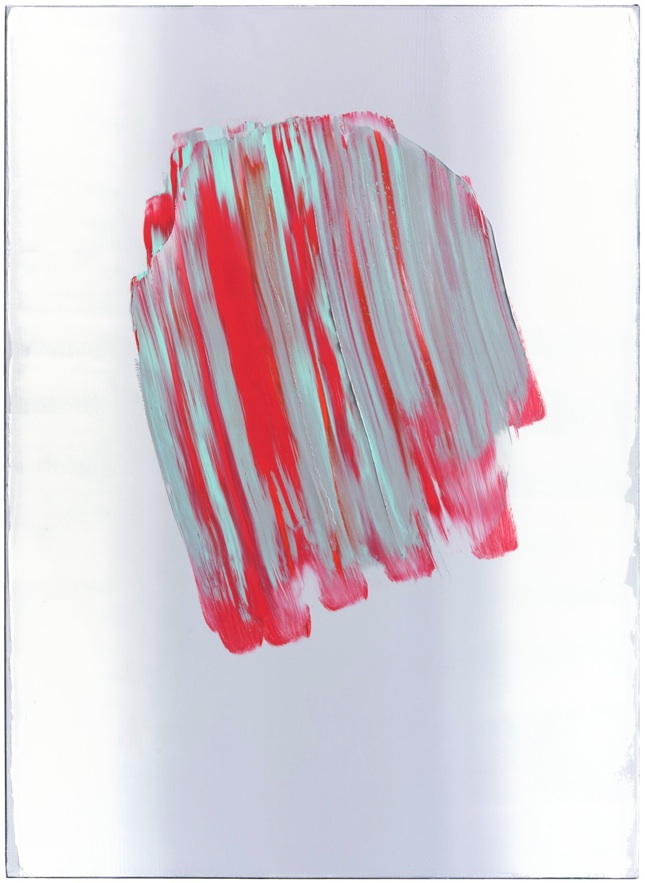
„KEIN TITEL“, B 200218, Öl/leinen, 180cm x 130cm, 2018 
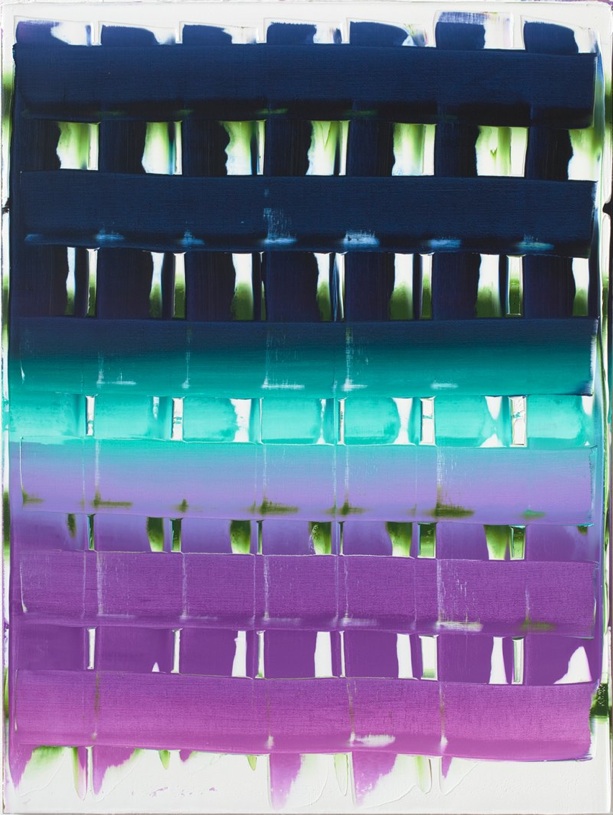
SCHULE, B 020317, Öl/leinen, 130cm x 100cm, 2017
回顾极简主义 (Minimalism)是将型态或色彩纯粹化,或还原至最小极限的表现潮流,并希望实现作品不具任何意义的状态,只呈现物件「存在现在、位在这裡」的当前自我表述。像是风格多变的德国艺术家 Gerhard Richter葛哈.李希特在1970年代开始创作 Abstract Painting 抽象绘画系列作品,开始在画布上刷上大片原色,再堆迭出许多层次;而后,他开始使用自製的橡皮刮板来抹除和摩擦在画布上的大片油彩,他让绘画「自行地演变」。又如德国艺术家 Sigmar Polke西格玛.波尔克在1980年代对画布进行的彩虹色强烈顏料实验,将传统顏料、漆、树脂融合產生化学变化,呈现抽象表现的独特性。也让人联想至抽象艺术大师代表人物 Mark Rothko马克.罗斯科在色彩的浪漫与意念崇高间摆盪的抽象詮释。层层顏料,在时间的推移下,每一次的刮除与磨合都展开新的一页歷史,顏料发展讯息,又被收回,不怕破坏画面,在前进与后退之间,Krauskopf克劳斯科夫在画布的每条织线上,将记忆与消逝放入抽象的世界中。
这次在 Bluerider ART展出 Peter Krauskopf 彼得.克劳斯科夫个展为首度在亚洲地区登场的展览,他的作品名称都有固定编号并以创作年代识别,偶尔辅以名词描述。此次展出:延续垂直线条的系列作品,如作品MINI Z, B 041220 (2020)、SCHULE, B 151018 (2018),或是对比色彩强烈的作品Z, B290920 (2020)、温暖而明亮清晰的Z, B 121220(2020),都是Krauskopf克劳斯科夫在同一画面构图上不断让线条与顏色发生变化的实验,细节又如同呼吸般自然流畅。另外也展出相当知名的 ALTESBILD 系列作品,德文原意为「以前的图像」(old picture),展现Krauskopf克劳斯科夫对於艺术史中绘画编码的追求,交错的涂料及有机片状的色块,使观者的思绪回到了鬱鬱葱葱的风景歷史中,「过去与现在」的完成之间创造了共生的关係。艺术家Peter Krauskopf彼得.克劳斯科夫带领观者进入「意识的惊奇」(Marvel of consciousness),在画布上领悟对於美的深层感知,从哲学、心理、精神层面,走入意识的诗句篇章中,惊奇於面对抽象艺术的自我探索。
Z-paintings “是对于「使用者介面」图像方式的表达,我以二至三层的颜料叠加,然而最下层却再次的暴露(裸露)在外,这不仅是一种绘画破坏或考古学的行为,也是一种证明画家身体存在的姿态。 ” – Peter Krauskopf, Z, B 121220, 140x90cm, 2020, Oil on linen (左)Z, B290920 , 140x90cm, 2020, Oil on linen(右)
ALTES BILD “德文原意为「以前的图像」(old picture),他们是介于抽象画与风景画之间,一种对于色彩导向绘画的表达。例如,我们从过去几个世纪的古典欧洲油画中得知,画家们遵循的原则是在一幅画作中,颜色相互照亮和遮蔽,这也是一个主要绘画原则。 ” – Peter Krauskopf, ALTESBILD, B 100121, 51x38cm cm, 2021, Oil on linen(左)ALTESBILD, B170421, 65x48cm, 2021, oil on linen(右)
“意识惊奇” –
Peter Krauskopf 彼得.克劳斯科夫 亚洲首个展
展期:2021.9.11 – 2021.10.31
Bluerider ART 台北.敦仁
Tue.-Sun. 10am-7pm
台北市大安区大安路一段101巷10号一楼
看作品
SCHULE, B 151018
2018 | 150x100cm| oil on linen
GELBES BILD Z_, B 021115
2021 | 150x110cm| oil on linen
Z, B290920
2020 | 140x90cm| oil on linen
Z, B 121220
2020 | 140x90cm| oil on linen
Z, B 150920
2020 | 130x80cm| oil on linen
Z, B 170920
2020 | 130x80cm| oil on linen
ALTESBILD, B 100121
2021 | 51x38cm| oil on linen
ALTESBILD, B 010621
2021 | 65x47cm| oil on linen
ALTESBILD, B170421
2021 | 65x48cm| oil on linen
MINI Z, 00Serie, 2von3 Teile, B 041220
2020 | 48x33cm| oil on linen
B151016
2016 | 140x100cm| oil on linen
Gray, B 250219
2019 | 140x100x7cm| oil on linen
KEINTITEL, B 260419
2019 | 140x100x5cm| oil on linen
艺术家Artist
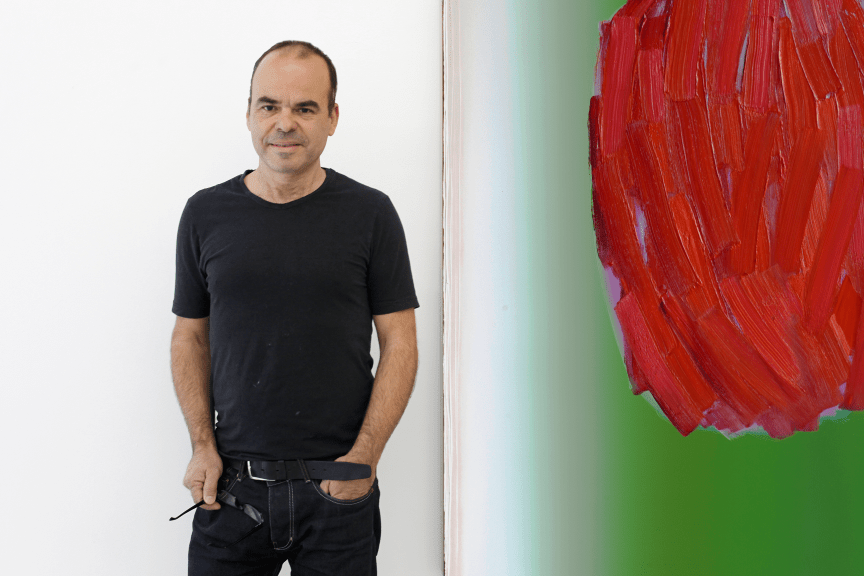

Peter Krauskopf 彼得.克劳斯科夫
(Germay, b.1966)
Peter Krauskopf 彼得.克劳斯科夫(德,b. 1966) 生於德国莱比锡,就读莱比锡视觉艺术学院,并受莱比锡画派先驱 Arno Rink阿诺.林克指导完成学业。目前居住及创作於柏林。Krauskopf克劳斯科夫是莱比锡画派中第一位由写实走向抽象的艺术家。早期作品在观念艺术上探讨,也尝试过「条幅画」 (strip painting),而后不断尝试抽象艺术的可能性。西班牙哲学家暨艺术评论者Fernando Castro Flórez费尔南多.卡斯特罗.弗洛雷斯曾形容:「透过他神秘而寧静的画作,Peter Krauskopf彼得.克劳斯科夫打开了那扇惊奇之窗。面对弃绝光明的虚无喜悦,他绘製了一个让我们可以找回最强烈美感的空间。」2015年他获得国际当代艺术知名项目 Falkenrot Prize,曾受邀於欧洲重要城市柏林、慕尼黑、莱比锡、里斯本等城市举办个展,作品被纽伦堡日耳曼国家博物馆(Germanisches Nationalmuseum Nuremberg)、G2莱比锡艺术馆(G2 Kunsthalle Leipzig)、慕尼黑Munich Re风险管理艺术收藏(Munich Re Art Collection Munich)等机构典藏。
„Z“, B 281114, Öl/leinen, 130cm x 100cm ,2014, Peter Krauskopf 为2015 年 Falkenrot Prize 当代艺术大奖得主。
Peter Krauskopf – S T R U K T U R at G2 Kunstalle, Leipzig, 2018
“Drift”, 2018 at Kunsthaus Kaufbeuren (德国考夫博伊伦博物馆) , Germany
媒体报导 Press

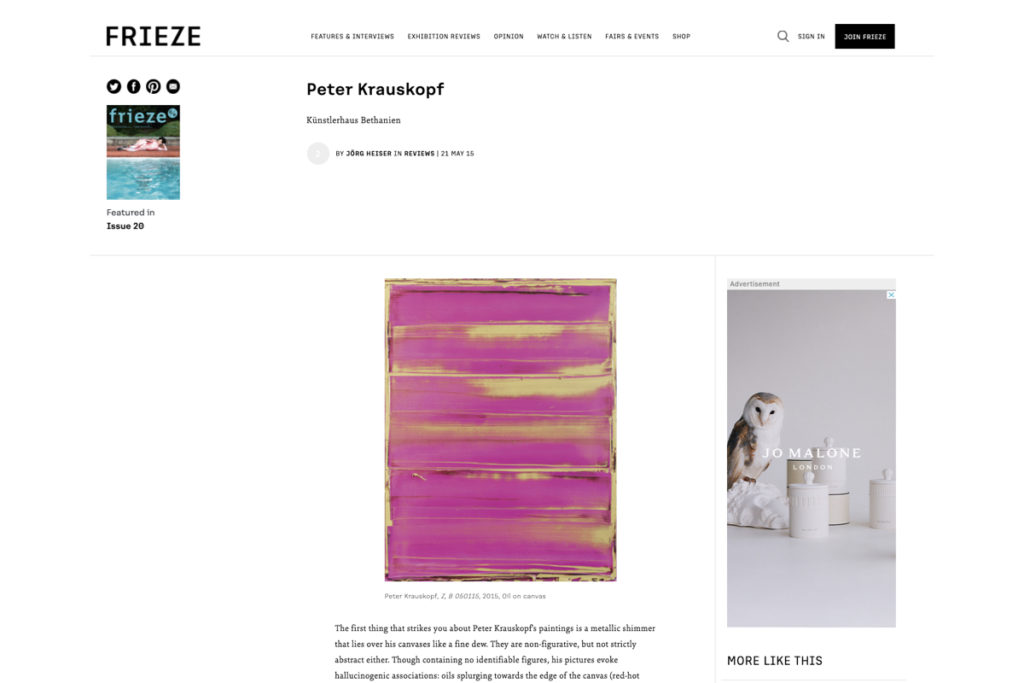
FRIEZE:Peter Krauskopf 

MEHR BERLIN: VIER SEITEN KUNST, POLITIK UND STADTGEFUHL
Peter Krauskopf
Germay, b.1966
Education
1997 Graduate School Graduation at Hochschule für Grafik und Buchkunst in Leipzig.
Selected Solo Exhibitions
2021 STUDIO, with Susanne Kühn, Museum der bildenden Künste Leipzig, DE
2021 Peter Krauskopf solo exhibition, Bluerider ART, Taipei, Taiwan
2020 Peter Krauskopf,Walte Storms ,GalerieMunich,Germany
2019 Paintings 2015-2019, Munich RE Art Collection, München, DE
2019 Berlin-Klondyke, Galeria Monumental, Lisbon, Portugal
2018 Code of color deGalería Álvaro Alcázar,Madrid,Spain
2018 DriftKunsthaus Kaufbeuren,Kaufbeuren,Germany
2018 GrünsteinWalter Storms Galerie,Munich,Germany
2017 StrukturG2 Kunsthalle,Leipzig,Germany
2017 40 Jahre Walter Storms Galerie , 1977 – 2017,Walter Storms
Galerie,Munich,Germany
2016 Hide And SeekJochen Hempel, BerlinBerlin,Germany
2016 Walter Storms Galerie,Munich,Germany
2015 DioramaGalería Álvaro Alcázar,Madrid,Spain
2015 Falkenrot Preis 2015Künstlerhaus Bethanien,Berlin,Germany
2014 Zwalter storms galerie – Ismaninger Strasse,Munich,Germany
2014 Jochen Hempel Leipzig,Leipzig,Germany
2013 Elbe -Galeria Vilaseco,A Coruña,Spain
2012 GrauJochen Hempel Berlin,Berlin,Germany
2012 Landschaft mit abstraktem GemäldeGalerie Neue Meister
2012 Albertinum,Dresden,Germany
2012 Kunstgewerbemuseum Dresden,Dresden,Germany
2011 BlockWalter Storms Galerie,Munich,Germany
2009 Walter Storms Galerie,Munich,Germany
2008 Forum Kunst Rottweil,Rottweil,Germany
2008 Jochen Hempel Leipzig,Leipzig,Germany
2007 Mies van der Rohe Haus,Berlin,Germany
2006 Arbeiten 2006Galerie Elly Brose-Eiermann (former büro | für | kunst) –
Dresden,Dresden,Germany
2006 Galerie Christian Roellin – St. GallenSt. GallenSwitzerland
2005 Walter Storms Galerie,Munich,Germany
2004 Fehlfarben – Staatliche Kunstsammlung DresdenGalerie Neue Meister –
AlbertinumDresdenGermany
2001 EIN LOB DER KLEINEN DIFFERENZEN – Zur Konstruktion 1/01 von Peter
KrauskopfGalerie Paula Böttcher,Berlin,Germany
2000 Jochen Hempel Leipzig,Leipzig,Germany
2000 Stiftung Moritzburg – Kunstmuseum des Landes Sachsen-Anhalt,Halle,
Saale,Germany
2000 voxxx.galerie,Chemnitz,Germany
1999 Neue Arbeite-Galerie Frank Schlag & Cie. GmbH,Essen,Germany
Selected Group Exhibitions
2021 New Luxe Bluerider ART Shanghai, China
2021 Made in Germany, Bluerider ART, Taipei, Taiwan
2020 Switch ON, Bluerider Art Gallery, Taipei, Taiwan
2019 Berlin-KlondykeGaleria Monumental,Lisbon,Portugal
2018 Summer In The CityGalerie Asbæk,Copenhagen,Denmark
2018 Summer in the CityMartin Asbæk Gallery,Copenhagen,Denmark
2018 MdbK meets G2 Malerei aus Leipzig nach 2000Museum der bildenden Künste Leipzig,Leipzig,Germany
2018 DepotJochen Hempel Leipzig,Leipzig,Germany
2018 Join the Dots / Unire le distanzeSalone Degli Incanti – Ex Pescheria Centrale,Trieste,Italy
2018 Una treguaGalería Álvaro Alcázar,Madrid,Spain
2017 La Foresta AnimadaGalería Álvaro Alcázar,Madrid,Spain
2017 ¡Manos Arriba, Esto Es Un Atraco!CCA Andratx,Andratx,Spain
2017 Berlin-KlondykeSOEHT 7,Berlin,Germany
2017 Golden AssLADEN FUER NICHTS,Leipzig,Germany
2017 Berlin-KlondykeMaribor Art Gallery,Maribor,Slovenia
2017 40 Jahre Galerie, Jubiläumsausstellung / Teil 1Walter Storms Galerie,Munich,Germany
2016 Peter Krauskopf / Yuval Shaul / Yehuda Altmann – The WalkSpinnerei archiv
massiv,Leipzig,Germany
2016 Sammlung HildebrandG2 Kunsthalle,Leipzig,Germany
2016 10 AñosGalería Álvaro Alcázar,Madrid,Spain
2016 ExchangeJonathan Ferrara Gallery,New Orleans, LA,USA
2015 Galerie Jochen Hempel @ JFG – Gallery Exchange ExhibitionJonathan Ferrara
Gallery,New Orleans, LA,USA
2015 Gute Kunst? Wollen!Auf AEG,Nuremberg,Germany
2015 Imago Mundi. Luciano Benetton Collection. Mappa dell’arte nuovaFondazione Giorgio Cini,Venice,Italy
2015 Berlin – Klondyke: 1. Berlin-EditionSalon Dahlmann,Berlin,Germany
2015 Berlin Artists’ Statements – announcementBWA Contemporary Art Gallery in Katowice,Katowice,Poland
2015 G2 #1 – Leipzig 2015 – Sammlung HildebrandG2 Kunsthalle,Leipzig,Germany
2014 brennzeitenKunst und Literatur Forum Amalienpark e.V.,Berlin,Germany
2014 5 jahre schellingstr. 48Walter Storms GalerieMunich, Germany
2014 Architekt – Busdriver – Zwei Brücken – 20 Jahre Gesellschaft für Moderne Kunst in DresdenKunsthalle im Lipsiusbau,Dresden,Germany
2014 InterferenciasGaleria VilasecoA ,Coruña,Spain
2014 Group ShowJochen Hempel Leipzig,Leipzig,Germany
2013 salondergegenwart 2013salondergegenwart,Hamburg,Germany
2013 Berlin-KlondykeHipp Halle Gmunden,Gmunden,Austria
2013 Schöne Landschaft – Bedrohte Natur. Alte Meister im Dialog mit zeitgenössischer KunstKunsthalle Osnabrück,Osnabruck,Germany
2013 Berlin KlondykeWerkschauhalle,Leipzig,Germany
2013 jetzt hier. Gegenwartskunst. Aus dem KunstfondsKunsthalle im Lipsiusbau,Dresden,Germany
2012 Berlin-KlondykeNeuer Pfaffenhofener Kunstverein,Pfaffenhofen,Germany
2012 Alles WasserGalerie Mikael Andersen – Berlin,Berlin,Germany
2012 geteilt | ungeteilt – Kunst in Deutschland 1945 bis 2010Galerie Neue Meister – Albertinum,Dresden,Germany
2011 Berlin Klondyke 2011Art Center Los Angeles,Los Angeles, CA,USA
2011 Berlin Klondyke 2011The Odd GalleryDawson, YT,Canada
2011 Das versprochene LandGalerie Neue Meister – Albertinum,Dresden,Germany
2009 KonstruktivLeinemann-Stiftung für Bildung und Kunst,Berlin,Germany
2009 Begegnung Bauhaus. Kurt Schmidt und Künstler der Avantgarde – von Kandinsky bis VasarelyKunstsammlung Gera – Orangerie,Gera,Germany
2008 Alge – Dillmann – KrauskopfKunsthalle Lingen,Lingen,Germany
2007 30 Jahre walter storms galerie – JubiläumsausstellungWalter Storms Galerie,Munich,Germany
2006 global playersBTAP (Beijing Tokyo Art Projects) – Tokyo,Tokyo,Japan
2006 Global Players – Zeitgenössische Künstler aus Japan und DeutschlandLudwig Forum für Internationale Kunst,Aachen,Germany
2005 Summer Group ShowJochen Hempel Leipzig,Leipzig,Germany
2005 Martin Borowski | Peter Krauskopf | Sophia Schama – FRIES — MalereiGalerie Elly
Brose-Eiermann (former büro | für | kunst) – Dresden,Dresden,Germany
2005 Leipzig und die konstruktiv-konkrete KunstKunsthalle der Sparkasse Leipzig,Leipzig,Germany
2002 Wunschbilder – Neuerwerbungen des Kunstfonds SachsenMuseum der bildenden Künste Leipzig,Leipzig,Germany
2000 Bildwechsel – GruppenausstellungKunstsammlungen Zwickau – Städtisches Museum,Zwickau,Germany
1998 Vitale Module. Gegenwartskunst aus SachsenKunstverein Ludwigshafen,Ludwigshafen,Germany
1997 Vitale Module. Gegenwartskunst aus SachsenKunsthaus Dresden,Dresden,Germany
Collections
Berlinische GalerieBerlin
ALTANA Kulturstiftung im Sinclair-HausBad Homburg
Germanisches NationalmuseumNuremberg
Galerie Neue Meister – AlbertinumDresden
Kupferstich-KabinettDresdenG2 KunsthalleLeipzig
Stiftung Moritzburg – Kunstmuseum des Landes Sachsen-AnhaltHalle, Saale
Munich Re Art CollectionMunich
